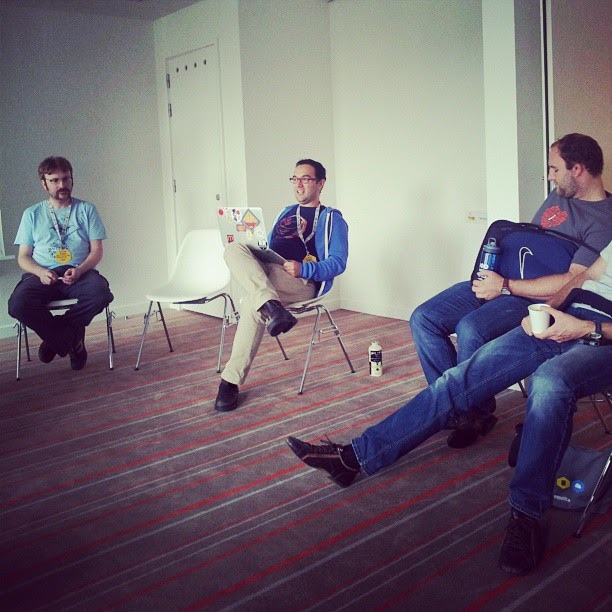Chapter 15: Ellis and Beck: Cognitive-Behavior Therapy and Acceptance Therapy
Part 2: Rational Emotive Behavior Therapy
In order to understand Ellis’ perspective on therapy, one must first understand his perspective on the basis of psychological disturbances, whether they are minor problems with personal adjustment or more serious forms of mental illness. Individuals with problems typically have a long history related to the disorder. Using the same example as Ellis (1957), suppose a woman is chronically depressed because she has been rejected by men she really liked and with whom she wanted to have long-term relationships. She understandably concludes that the activating event of being rejected leads to the consequence of being depressed. However, this conclusion is wrong! According to Ellis, it is not the rejection that causes her depression, it is the belief system that arises within her, particularly irrational beliefs, that cause her depression. For example, if she rationally believed that it was unfortunate that someone she liked rejected her, or that it was frustrating that she was rejected, she might not become depressed. However, if she irrationally believes that it is awful that she has been rejected, or that she should have been more beautiful so that he wouldn’t have rejected her, then she is quite likely to become depressed. This is what Ellis referred to as the A-B-C’s of emotional disturbance or self-defeating behaviors and attitudes. A refers to the activating event (being rejected), B refers to the person’s beliefs (this is awful, I’m not pretty), and C is the consequence of the beliefs: depression. The basis for therapy in such situations can be found by extending the A-B-C’s to the D-E’s: disputing (D) the irrational beliefs, which hopefully leads to the cognitive effect (E -effective new philosophies, emotions, and behaviors) of disrupting the self-defeating patterns of behavior (Ellis, 1957, 1973, 1996). More recently, Ellis has proposed one more letter for his ABC theory of personality, the letter G for goals (*note: there is no “F”). Goals consist of a person’s purposes, values, standards, and hopes. When these goals are thwarted by an activating event, the person can respond by choosing healthy or unhealthy alternatives, and the nature of that choice is based on one’s beliefs (Ellis, 1994). Ellis considered the ABC theory to be so straightforward that it could prove helpful to anyone.
When an individual has become trapped by unhealthy belief systems and the corresponding self-defeating behavior patterns that accompany them, the potential need for psychotherapy arises. The therapy that Ellis developed has come to be known as rational emotive behavior therapy, or REBT (the name went through several permutations over Ellis’ career, and he finally settled on REBT). The primary task of the therapist using REBT is to challenge the client’s irrational beliefs and, in so doing, to help the client change their belief systems. In essence, when the client believes that it would be catastrophic for a certain negative outcome to occur, the therapist tries to help them by disputing the irrational belief with questions such as: “Why would a certain outcome be catastrophic?” While trying to dispute the irrational beliefs, the therapist also searches for underlying philosophies that support the irrational belief system, philosophies that can then also be disputed. In addition to the cognitive aspect of REBT, the therapist often encourages the client to act against their irrational fears. If the client is willing, they have the opportunity to experience anxiety-ridden situations without the catastrophic consequences they have feared (although the help of the therapist may prove necessary along the way). Throughout this process, REBT does not intend to ignore the person’s feelings. However, when a client is suffering from unhealthy and self-defeating feelings, such as anxiety, depression, or anger, REBT can help to minimize those unhealthy feelings. In addition, REBT encourages healthy, positive emotions, and recognizes that sometimes a strong negative response, such as sadness or grief, to a tragic activating event may be healthy or constructive. When utilized effectively, REBT offered what Ellis believed was a better, deeper, and more enduring therapy, which could achieve those results in a fairly brief amount of time (Ellis, 1962, 1973, 1994, 1995, 1996). Ellis also believed that REBT was applicable to a wider range of clients than any other psychotherapy:
RET [later known as REBT], on the contrary, seems to be almost the only major kind of psychotherapy (aside, perhaps, from Zen Buddhism, if this is conceptualized as psychotherapy…) that holds that the individual does not need any trait, characteristic, achievement, purpose, or social approval in order to accept himself. In fact, he does not have to rate himself, esteem himself, or have any self-measurement or self-concept whatever. (pg. 65; Ellis, 1973)
First and foremost, Ellis focused on practical applications of psychotherapy, and he considered his approach to be humanistic in its emphasis on the whole person. He acknowledged that REBT shared important elements with the approaches of other classic theorists who had emphasized the value of individuals, including Alfred Adler, Viktor Frankl, Rollo May, Carl Rogers, Abraham Maslow, and Karen Horney (Ellis, 1973, 1995). Ellis’ discussion of the practice of REBT seems to focus on what Horney addressed in her concepts of neurotic needs and the tyranny of “the should.” Taken together, the desire to focus on practical applications and helping individuals has led to a wide variety of self-help books based on REBT (Yankura & Dryden, 1994). REBT has also been applied to a wide variety of other problems that have been covered in Ellis’ books, such as marriage counseling, personality disorders, depression, and even schizophrenia, and REBT has proved successful in both individual and group settings (Ellis, 1962, 1973, 2001; Ellis & Dryden, 1987).
Ellis, as well as other therapists using REBT, have also addressed addictive disorders, including alcoholism (Ellis, 2001; Ellis, McInerney, DiGuiseppe, & Yeager, 1988; Trimpey, Velten, & Dain, 1993; Yeager, Yeager, & Shillingford, 1993). In the early 1990s, Rational Recovery (RR) was developed by Jack Trimpey as an alternative to the Alcoholics Anonymous (AA) approach to treating alcohol abuse. Both Ellis and Trimpey challenge the basic principles of AA: that the addict has no control over their alcohol cravings, that they must turn over control to a higher power (such as God), that they can never drink alcohol again, and that only AA works for alcoholics. Objective research simply does not support these assertions, and practitioners of REBT and RR have great faith in the ability of individuals to take control of their own lives (though they may need some help from a therapist to get on the right path). RR also does not include the strong religious overtones of AA, which may be an impediment to recovery for anyone required to attend AA meetings but who does not believe in God.

Since REBT focuses on the choices that individuals make for themselves, what role is there for religion within such a perspective? Ellis maintains that there is a significant positive correlation between devout religious beliefs and a variety of emotional disturbances. However, he has argued that the problem is not religion per se, but rather highly restrictive, dogmatic religiosity that causes problems for an individual (Ellis, 2004; also see Yankura & Dryden, 1994). Ellis studied the works of Lao Tsu (author of the Tao Te Ching), Gotama Buddha (known by most people simply as the Buddha), and the existential theologian Paul Tillich, finding helpful perspectives for working with his clients and on his own problems (Ellis, 2004). He overcame his early objections to religion and spirituality by recognizing that when one’s religious beliefs contribute to good psychological health, the belief itself, regardless of whether or not God exists, is helpful. Similarly, Zen Buddhism is not actually a religion, but has significant religious overtones. Nonetheless, Ellis was impressed by the effectiveness of Zen meditation for many clients, so he incorporated various Eastern perspectives into the development of REBT.
Alcoholics Anonymous has helped many people, but it doesn’t help everyone, especially those who are opposed to religiosity or are simply atheists. Nonetheless, the AA approach has become a standard recommendation in many legal jurisdictions when someone commits a crime such as drunk driving. What do you think about Rational Recovery (based on REBT) as an alternative to AA?
Is Self-Esteem a Sickness?
The heading for this section is the title of the first chapter in a fascinating book by Ellis: The Myth of Self-Esteem (Ellis, 2005). Ellis believed that self-esteem is defined by psychologists in a way that requires individuals to rate, or judge, themselves. This may work fine when everything is going well for the person, but people are not perfect. Thus, they will eventually fail at something, perhaps at many things, and they must then judge themselves as bad or unworthy. If, however, you accept yourself as imperfect, and rate only your behaviors and thoughts, not your self, then you need not suffer from the effects of low self-esteem. In other words, Ellis advocates unconditional self-acceptance, a very old philosophy known to the Greeks, Romans, Buddhists, Daoists, and others (Ellis, 2005). Ellis considers many different approaches to the concepts of self-esteem and self-acceptance, including the perspectives of Solomon, Jesus of Nazareth, the existential philosophers Kierkegaard, Heidegger, and Sartre, Carl Rogers, the Eastern philosophers Lao Tsu, D. T. Suzuki, and the Dalai Lama, and Steven Hayes. Ellis concludes that one must seek not only to unconditionally accept oneself, but also to unconditionally accept others and the nature of life itself. But this is not a pie-in-the-sky philosophy. Ellis recognizes that there are sad and unfortunate events in life (we are fallible, and we are mortal). He strongly recommends that we do not avoid normal sadness and regret, since these emotions provide the motivation for trying to prevent unfortunate events and for seeking new relationships.

Ellis opposes the concept of self-esteem because he believes it requires a person to judge themselves. He advocates instead that we unconditionally accept ourselves, faults included. Does this make sense to you?
Supplemental Materials
What is Rational Emotive Behavior Therapy?
This video [10:30] describes the rational emotive behavior therapy (REBT). REBT is a therapeutic modality that was developed by Albert Ellis and it is a version of cognitive behavior therapy (CBT).
Source: https://youtu.be/HOi48z4g45Q
ABC Model of Cognitive Behavioral Therapy
This video [3:51] gives an overview of how to use the ABC model while providing examples to demonstrate each element of the model.
Source: https://youtu.be/WRRdSm4ZjX4
Rational Emotive Behavior Therapy Role-Play
This video [13:10] features a counseling role-play in which Rational Emotive Behavior Therapy (REBT) is used to treat a client (played by an actress) who has complicated grief. Thoughts occurring during bereavement are evaluated and alternative thoughts are explored.
Source: https://youtu.be/pGxc8pyhV2Q
This is a brief trailer [3:54] promoting a set of interviews conducted with Albert Ellis. To see the full interview, login through your Bay Path email using Kanopy: https://baypath.kanopy.com/video/albert-ellis-rebt.
Source: https://youtu.be/JE0k1t3d2to
References
Text: Kelland, M. (2017). Personality Theory. OER Commons. Retrieved October 28, 2019, from https://www.oercommons.org/authoring/22859-personality-theory. Licensed under CC-BY-4.0.
Dr. Todd Grande. (2018, February 21). What is rational emotive behavior therapy (REBT)? [Video File]. Retrieved from https://youtu.be/HOi48z4g45Q. Standard YouTube License.
Therapist Aid. (2014, October 23). ABC model of cognitive behavioral therapy. [Video File]. Retrieved from https://youtu.be/WRRdSm4ZjX4. Standard YouTube License.
Dr. Todd Grande. (2016, April 13). Rational emotive behavior therapy (REBT) role-play-Complicated grief. [Video File]. Retrieved from https://youtu.be/pGxc8pyhV2Q. Standard YouTube License.
SDS Psychotherapy Training. (2012, December 11). Albert Ellis on REBT- Trailer-Psychotherapy video. [Video File]. Retrieved from https://youtu.be/JE0k1t3d2to. Standard YouTube License.
